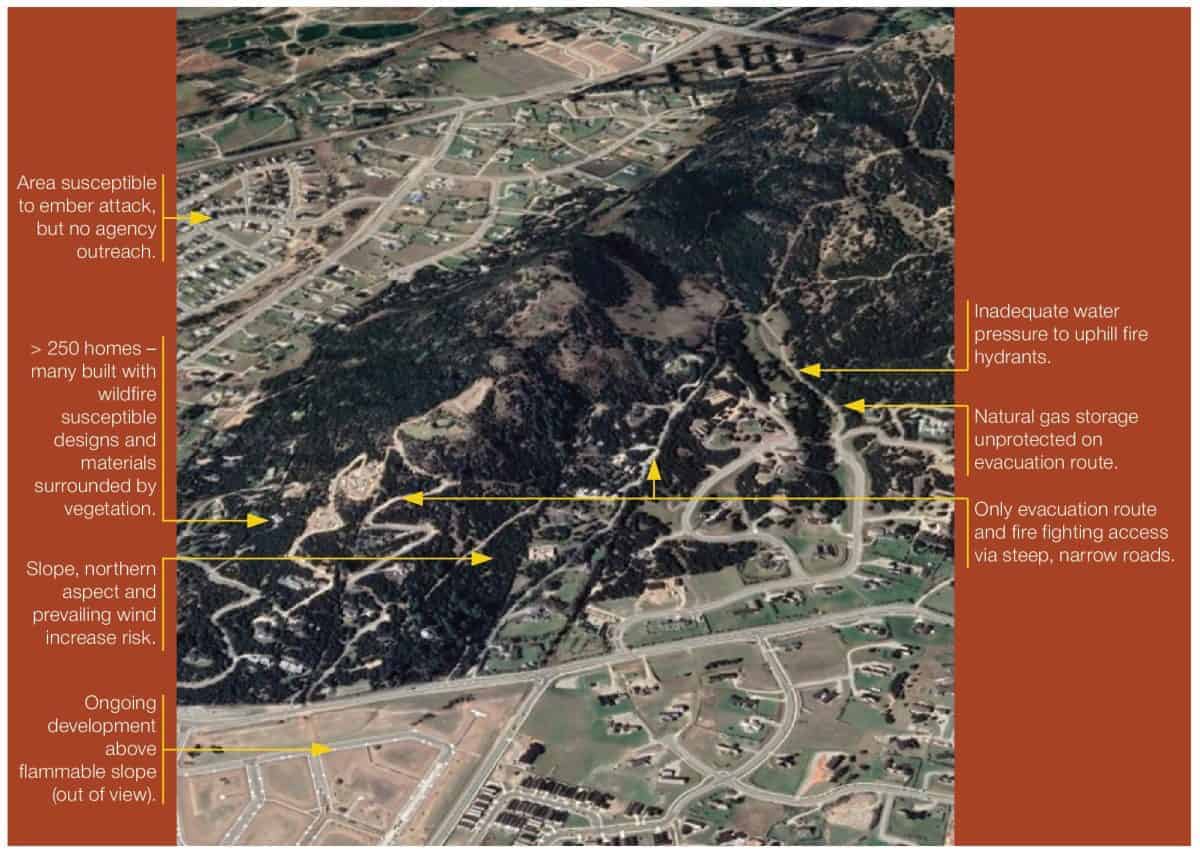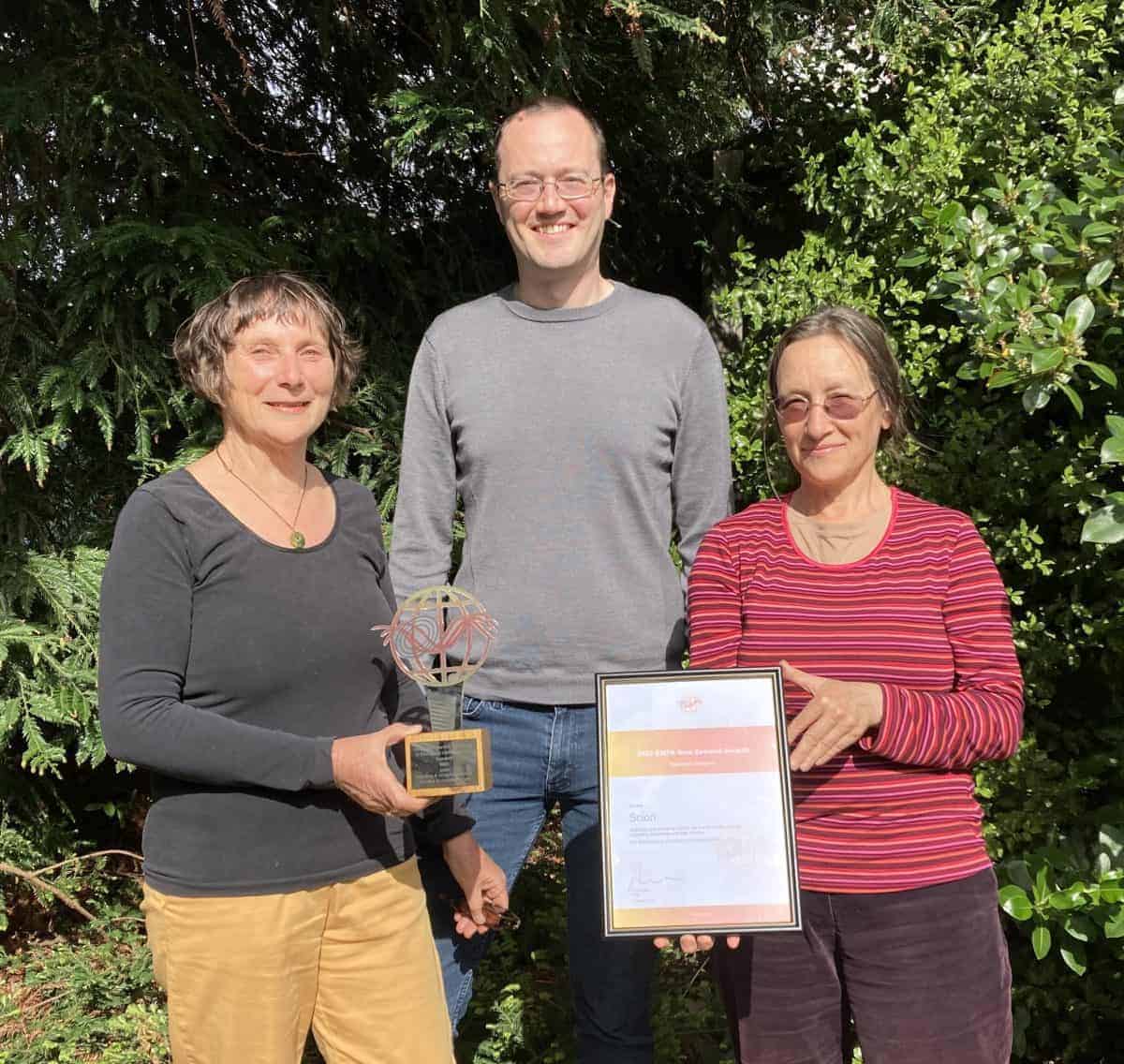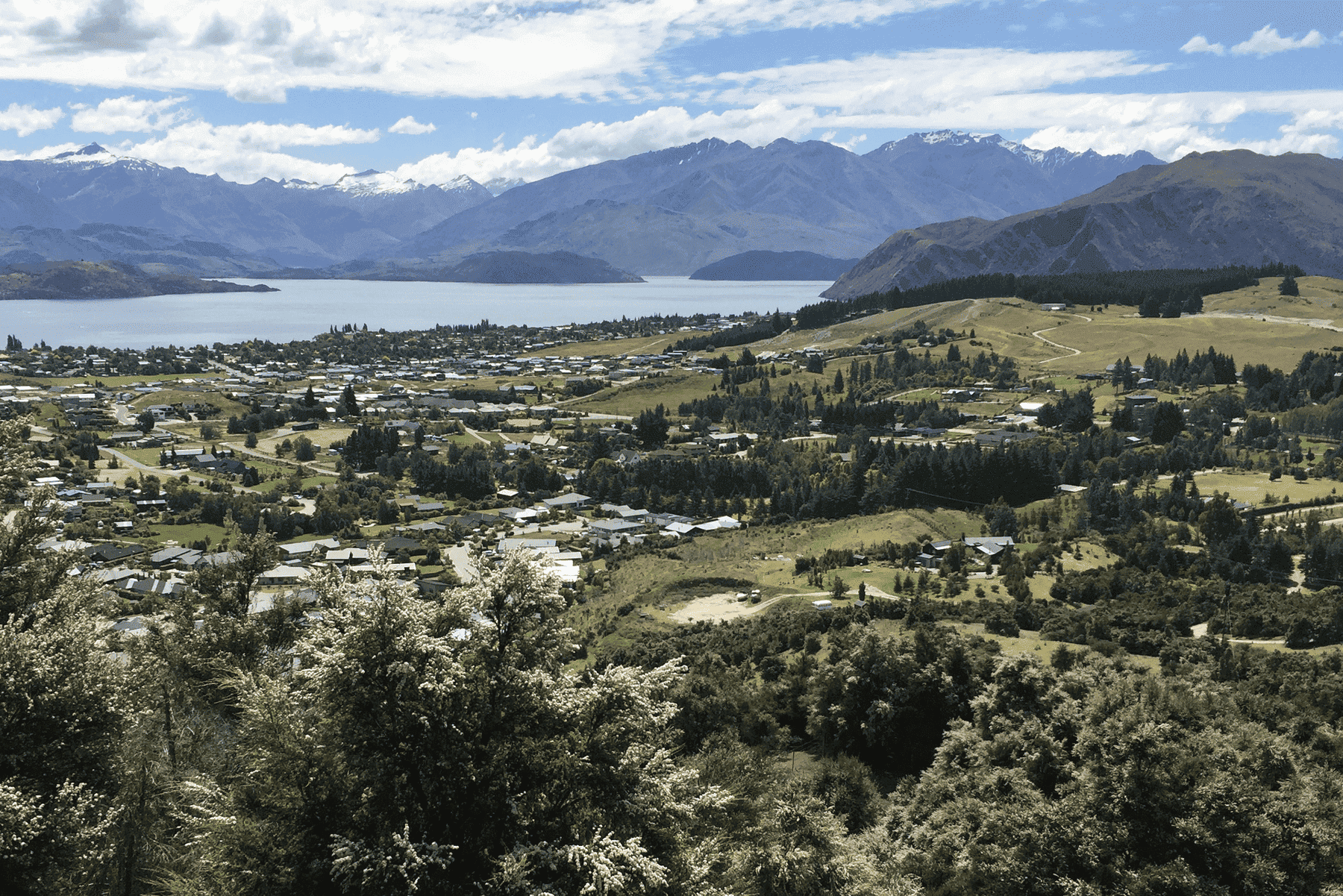The Central Otago and Queenstown Lakes districts have been identified as having high wildfire risk, and they also have rapidly growing residential areas at the rural-urban fringe.
The Mt Iron suburb at the edge of Wānaka exemplifies many of the issues of concern. More than 250 homes are built among highly flammable native kānuka vegetation. The clearing of vegetation, and kānuka in particular, is restricted by district plan rules to protect biodiversity and maintain visual character. Many properties have wildfire susceptible designs and materials, and some have only one evacuation route and limited firefighting access via steep, narrow roads. This area is a focus of concern for agencies and the community, and has been designated a ‘red zone’ with a total year-round fire ban.

As part of our Weather & Wildfire programme, a team led by Lisa Langer of Scion has been working with the Mt Iron community and agencies to prepare the community for ever-increasing wildfire risk. The project is a collaboration with Fire and Emergency New Zealand and Queenstown Lakes District Council, and received additional support from the Ministry for Primary Industries’ Sustainable Land Management and Climate Change Fund.
Researchers held numerous interviews and workshops with residents and stakeholders, to identify issues and develop mitigation recommendations.
The project resulted in 170 mitigation recommendations being made available to residents, grouped in the following five categories:
- When building or remodelling a home
- When landscaping or designing outdoor spaces and property infrastructure
- When making a wildfire plan
- When preparing for the start of each wildfire season
- When a wildfire occurs
Research findings have also led to a number of recommendations for fire agencies and councils.
Many Mt Iron residents are very aware of the wildfire risk and have started taking household and community preparedness actions. The research team has recommended ongoing engagement between agencies and residents to ensure information is made available to new residents, and to achieve wider uptake of mitigation actions.

In 2022, this work was recognised with an award by Emergency Media and Public Affairs at their New Zealand Emergency Communications Conference. Scion’s social and climate science team were announced as joint winners for research that improves community preparedness and increases the effectiveness of communication during an emergency response.
The work with the Mt Iron community has informed ongoing research on the topic of preparing to live with wildfire at the rural-urban fringe.
In 2021 Scion received MBIE Endeavour funding for a new research programme titled Extreme Wildfire: Our new reality – are we ready?. Part of the programme investigates how decisions made throughout planning, design and construction processes contribute to wildfire risk for homeowners. Researchers aim to develop recommendations that will influence how developers and councils plan for housing in at-risk areas.
More information on the Wānaka case study can be found in two published Fire Technology Transfer Notes:
Preparing homeowners and communities in the rural-urban interface for increasing wildfire risk




